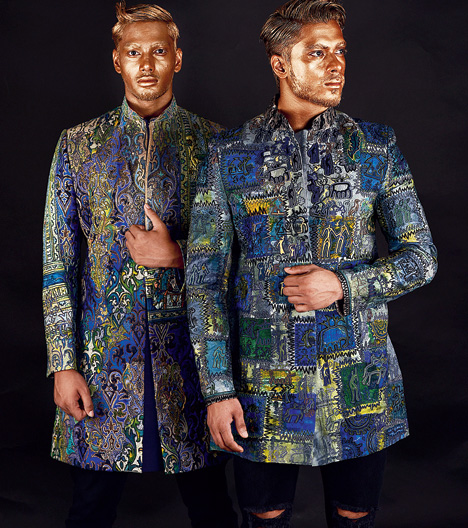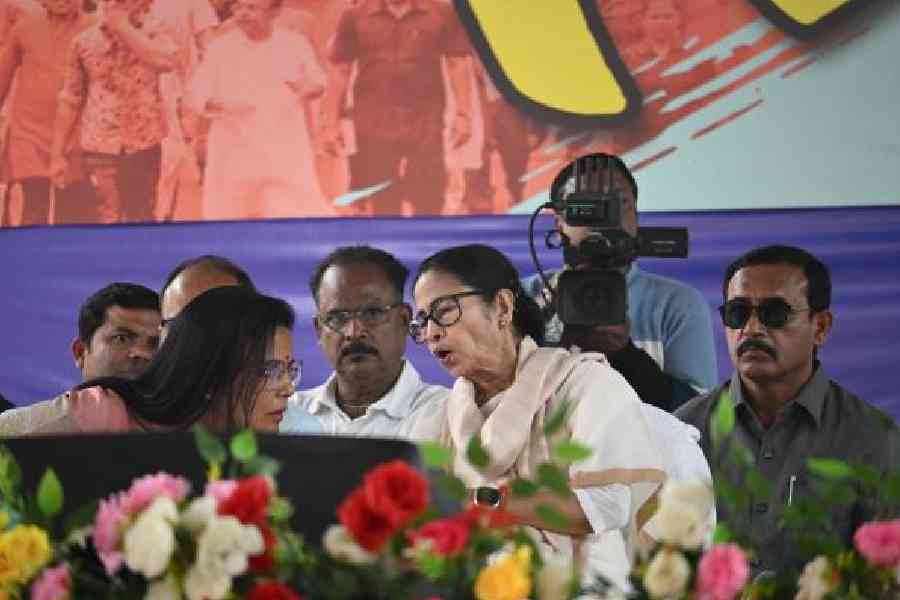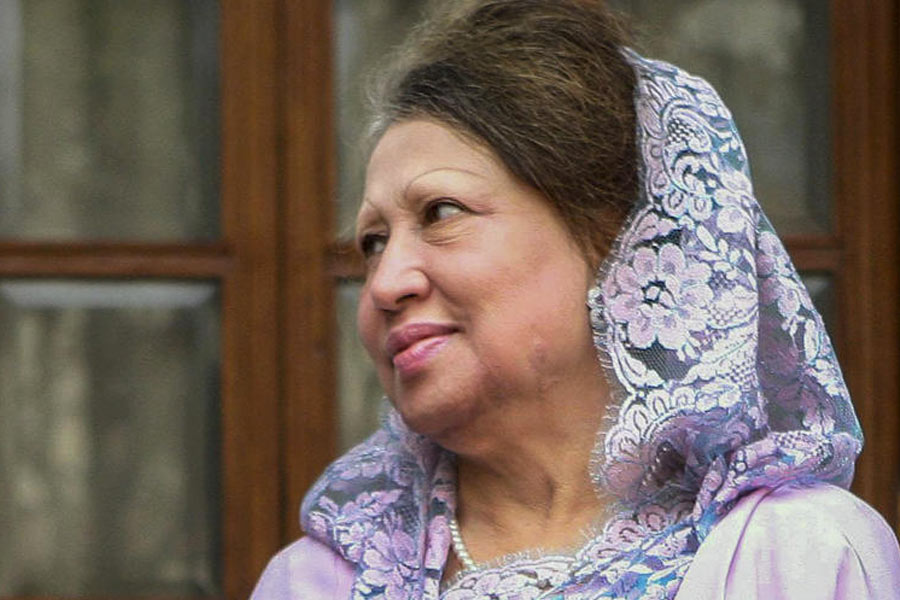
What: WelcomArt in association with Sharbari Studio presents Clad in Clay
Where: WelcomArt Gallery, ITC Sonar
When: Opens at 6.30pm on August 1 with a special preview to be inaugurated by artist Jogen Chowdhury. The exhibition will be open to public on August 2 and 3 from 11am to 7pm
He grew up in his father Alokemoy Datta’s world of sculptures, murals and clay pottery, dabbling in these art forms from a very young age. He later joined his mother, celebrated fashion designer Sharbari Datta, and immersed himself in the world of textiles and fashion. Throughout this life, Amalin Datta has juggled the two worlds, channelling his creativity through these varied mediums.
Clad in Clay — an art and fashion installation show presented by ITC WelcomArt in association with Sharbari Studio — is a culmination of Amalin’s twin loves. The show that will open with a special preview on August 1 will be on till August 3 at the WelcomArt Gallery at ITC Sonar.
In between giving finishing touches to his sculptures at his workshop in Kasba, Amalin spoke to t2 about his inspirations, and his plans for Sharbari Studio.
You are a fashion designer, why are you doing a sculpture show?
Sculpting is a skill I have inherited from my father and I have been groomed by him from childhood; I learnt the technicalities from him. Then in the early 1990s we launched the Sharbari brand and I got totally involved in fashion.
World history and cultural heritage have always attracted me, especially the attires of different cultures. But of course I haven’t been able to do all that with my clothes, considering market demands and acceptability. It’s difficult to do this kind of experimentation in garments; one has to keep commercial viability in mind. So I had always thought I could present them in the form of sculptures. I could really let my imagination run free with these installations.

Tell us about your father’s work and what you learnt from him...
My father was a renowned sculptor, but he was also well known for his brand of printed silks. From that aspect of his work I have learnt colour mixing, colour coordination.... In his work with sculptures, he was a trendsetter. He started doing pottery and experimenting with clay from different parts of Bengal, like the pathure maati of Purulia or the river clay from Birbhum. His favourite, though, was china clay. He used to do sculptures, murals, relief sculpture portraits... he used to improvise a lot.
He had done a huge mural wall for the Bombay airport. He has done the murals for the metro stations in Calcutta. He’s done innumerable murals and sculptures for corporate houses, hospitals, private residences, government buildings. I was totally involved in these works along with him, so I adopted all these techniques.
Why didn’t you take up art as a profession?
Fashion as a profession was of course more commercially viable. But then, I have always done sculpting parallelly. I still do a lot of interiors and exteriors. I do a lot of garden sculptures, masks, huge Buddhas, sundials, fountains, mythological statuettes and corporate mementos.
Tell us about the idea behind Clad in Clay...
I have reimagined and improvised on the dressing styles of cultures around the world, across ages. I have always been drawn to costumes that have force and movement and that’s what I have chosen for these installations. Also, all these garments have a sculptural element... otherwise I couldn’t have presented them so beautifully.
I will be presenting 10 sculptures and the inspirations range from Sinhalese traditional angarkha to the Chinese Terracotta Army, Shanghai monastery costumes, then clothes worn by the pirates of the Caribbean. Then there’s one sculpture inspired by Mayan civilisation, another by Victorian gowns, and the costumes of the British lords.
What are the materials you’ve used?
I have used china clay, with that I have used clay from Birbhum and sand, and embellished them with fittings in wood, metal, fabrics and cowrie shells. For the clay, I had to keep in mind the texture, the stickiness and how durable it would be when exposed to weather conditions.
What do you plan to do with these sculptures?
I plan to sell them if anyone wants to buy, but three-four of them will go to a retreat that we are building in Ahmedpur, near Bolpur.
As a designer you must be tempted to show your clothes as well, so how are you going to showcase your clothes at this show?
We will be showing a limited line of clothes too, but since the sculptures are the central part of the show, we will be presenting the clothes almost as sculptures so that they blend with the mood.
So tell us about the collection you are showing...
Jackets and angarkhas for men and long gowns for women... silhouettes that have sculptural shapes. In this collection we have experimented majorly with the colours; we have created the colours and then broken them using discharge technique and these fragmented colours form the background on which we have done the designs.

Now that you are heading Sharbari Studio and your mother has distanced herself from the brand, what are your plans for the label?
I have always handled design and production at Sharbari Studio. From deciding cuts and styles to updating the brand to meet modern demands whenever necessary, I have always done that. My mother only used to sketch on some of the pieces.
I want to carry on experimenting with the creations to make the brand more and more contemporary, and reach more and more people. But then I don’t want to give up on the timelessness of the brand either... like we are never going for fads. We use new technology to cater to new generation’s demands.
It is very important to feel the pulse of the new generation. I feel that with every generation the looks are changing. We used to do achkans that were knee-length, but today we are doing achkans that are waist-length. Then we are exploring new colour zones for menswear. I want to carry on with these experimentations. I want to do three-dimensional sherwanis with projection, then maybe illuminated sherwanis... these experiments I have to keep on doing. My journey is all about this. My women’s wear line that I launched in 2014 is doing well... but I’m not doing large numbers; very limited edition collections. We are also planning to launch a pret line for men, which will have the brand ethos.
We have been a bespoke brand for the past 27 years and that’s how we want to keep it. We have operated out of our home studio (40/1A Broad Street) and people have enjoyed this informal shopping experience. Our work is not mass, these are studio pieces, so we don’t want to expand with stores all over the country and dilute our products. Maybe we produce less, but the products are made with passion.










